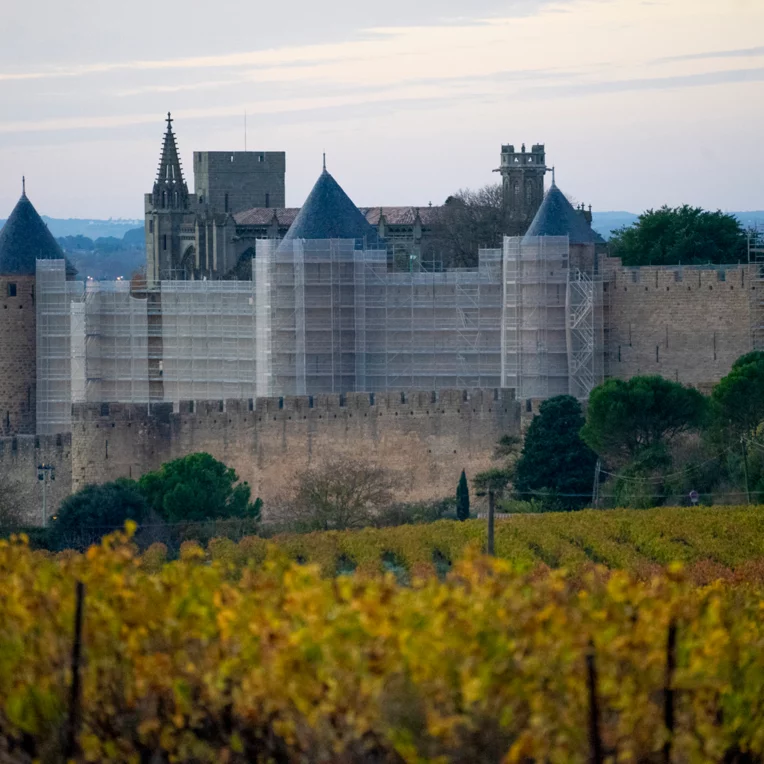Carcassonne’s Ramparts Reborn: 300 Meters Rebuilt and Fully Open for Visitors
The medieval fortress of Carcassonne, one of France’s most visited UNESCO sites, has quietly entered a new chapter. For the first time in centuries, visitors can now walk a complete 1.3 km loop around the inner ramparts – thanks to a major restoration that rebuilt 300 meters of walls and nine towers on the city’s eastern side.
A Monumental Project
The work began in 2022 and ended in September 2024, marking the most ambitious restoration at Carcassonne since the 19th-century efforts of architect Eugène Viollet-le-Duc.
In total, the project cost €5.6 million, with €4.5 million covered by France’s national heritage recovery plan.
It involved more than 40 specialists – stonemasons, carpenters, and structural engineers – working under the supervision of the Centre des monuments nationaux (CMN).
Their mission was to stabilize the eastern fortifications, many of which had suffered erosion, structural cracks, and vegetation damage.
The section restored lies between the Narbonnaise Gate and the Tour de la Prison, one of the most weather-exposed stretches of the fortress.
Craftsmanship Over Speed
The project relied on traditional medieval techniques rather than industrial shortcuts. Damaged stones were replaced one by one using local sandstone from nearby quarries, carefully matched in color and grain to the original material.
Inside the towers, oak floors were rebuilt following 13th-century patterns, while the walls were repointed by hand using lime mortar. Surfaces were gently cleaned to remove moss and pollution without stripping the patina left by time.
Rather than re-inventing Viollet-le-Duc’s 19th-century battlements, restorers aimed to preserve them, reinforcing where needed but keeping his characteristic pointed roofs and stone crenellations intact.
A New Experience for Visitors
The result is more than cosmetic. For the first time, visitors can now follow the entire inner-wall circuit without interruption.
The restored section forms the eastern link of the ramparts walk – connecting the twin-towered Porte Narbonnaise to the Tour de la Prison.
The path now includes discreet safety railings and stabilized walkways, opening panoramic views over the Aude Valley, the Montagne Noire, and the rooftops of the Bastide Saint-Louis below.
This new stretch also improves the flow of visits. Until 2024, the loop was broken by an impassable section under repair; today, the route forms a continuous circuit, allowing travelers to circle the fortress in a single visit.
For many, 2025 will be the first full season to experience Carcassonne as a complete, walkable fortress – something that hasn’t been possible since the Middle Ages.
Heritage and Renewal
Beyond tourism, the restoration helps protect the site from further decay. By consolidating the masonry and improving drainage, it reduces water infiltration, one of the main threats to the medieval walls.
The CMN sees this as part of a broader mission: to make the Cité both accessible and sustainable, balancing heavy visitor traffic (around two million people per year) with the preservation of fragile stonework.
The success of this project could serve as a model for similar fortifications across France, where many sections remain closed due to safety concerns or lack of funds.
Viollet-le-Duc: The Man Who Saved Carcassonne
Long before this latest restoration, Carcassonne was already a symbol of heritage revival, thanks to Eugène Viollet-le-Duc, the 19th-century architect who saved the fortress from ruin.
When he began work in 1844, the Cité was collapsing, its towers stripped of roofs and its walls crumbling.
Over three decades, he reconstructed the double ramparts, restored over fifty towers, and gave Carcassonne the fairy-tale silhouette recognized today.
His choices sparked debate, especially his decision to use slate roofs, typical of northern France rather than the local terracotta. But his intervention ultimately saved the site from demolition. Without his vision, Carcassonne might have vanished entirely.
Today’s 2024 restoration continues that same spirit: preserving not just the stones, but the legacy of a monument that defines France’s medieval imagination.

